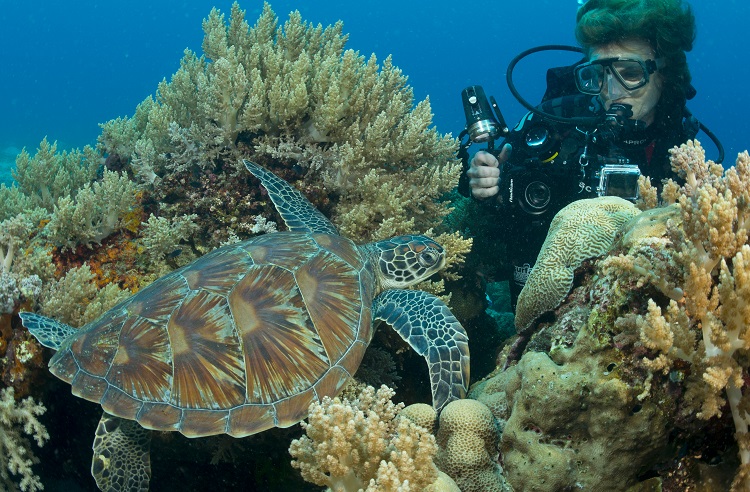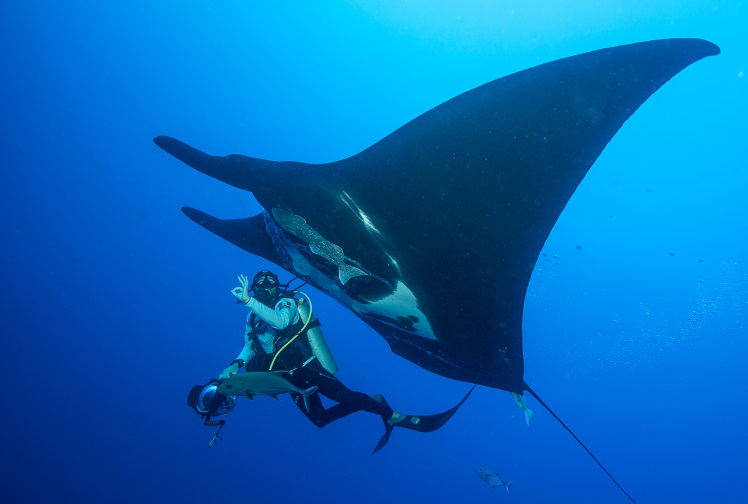Pregnant Female Ghostpipefish
01-Oct-2012 Back to Image Gallery
Photographing Ornate Ghostpipefish is a photographer’s dream as they are so cooperative, hovering almost motionless, displaying their fins and even changing their posture providing poses worthy of a supermodel. Finding them however is a photographer’s nightmare. The Ornate Ghost pipefish will typically be highly camouflaged among the arms of feather stars (Crinoids) and there is inevitably hundreds of feather stars on the reef with very few ever hosting a Ghost pipefish. You could hunt through thousands of feather stars in a fruitless quest like I used to do but I have learned two key secrets that yield better than above average results. I now understand that the Ghostpipefish prefer feather stars that reside in sheltered marine environments commonly referred to as muck dives and I know that local dive guides tend to know which feather stars are currently harbouring Ghostpipefish! This explains why I only ever encountered one during my thousands of dives in Australia and the South Pacific only to find myself spoiled for choice once the sharp eyed dive guides of the coral triangle region developed their skills.
Photo Data: Location: Lembeh Strait, North Sulawesi, Indonesia. Genre: Macro. Photo Data: Nikon D200, Nikkor 60 MM lens, Seacam Housing, Dual Seacam Strobes, and Manual Exposure Mode. ISO 100 Exposure f16 @ 1/125th sec. Image by Kevin Deacon.
Photo Hints: Photographers using DSLR cameras are typically encouraged to use aperture settings of F32 or more to achieve maximum depth of field in the image. However, I have recently learned a lot more about optical aberrations and in fact an aperture of F22 or F16 can produce sharper images by avoiding lens diffraction! So, a compromise between maximum sharpness and maximum depth of field is a decision we must make and this will depend on the type of subjects we are shooting. Equipment Comments: My lens of choice for macro images with a DX Sensor (Cropped Sensor) DSLR is the 60mm Macro Lens. With an FX Sensor (Full Sensor) DSLR I would use a 105mm Macro lens as it would produce similar lens format (lens angle) image ratios and performance.
Interesting Facts: Closely related to the seahorse, pipehorse and seadragon family the Ghostpipefish exhibits behaviour and characteristics more like fish than its cousins. For example the female rather than the male carries the eggs and it’s fins are more typical of a fish. If you look carefully you will note the white eggs in this female’s brood pouch between her pectoral fins. Male Ghostpipefish are also much smaller than the female. This family group is small with little more than 5 known species with the Ornate Ghostpipefish being the most spectacular and since it occurs in a number of attractive colour variations it is the most sought species by photographers.



